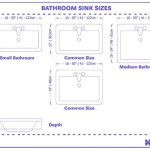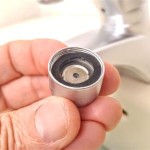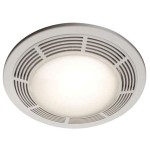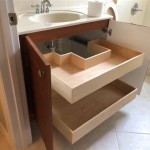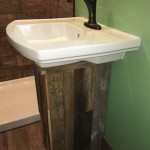What Are The Little Worms In My Bathroom?
Finding tiny worms in your bathroom can be a distressing experience. These unwelcome guests often appear in damp and humid areas, raising concerns about hygiene and potential health risks. Identifying the type of worm is crucial to determining the best solution. While they appear small, these creatures can be a nuisance, and their presence can indicate underlying issues in your bathroom.
Common Bathroom Worm Culprits
Several types of worms frequently find their way into bathrooms. Some are harmless, while others may require professional pest control. Here are some of the most common culprits:
1. Vinegar Eels (Turbatrix aceti):
Vinegar eels are microscopic nematodes, typically found in locations with high moisture and organic matter. They are attracted to damp environments, such as shower drains, sinks, wet towels, and even bottles of vinegar (hence the name). While harmless to humans, vinegar eels can appear alarming due to their wriggling movement and noticeable size under magnification.
2. Drain Flies (Psychodidae):
Drain flies, also known as moth flies or sewer flies, are small, dark-colored flies that resemble moths. They are attracted to damp environments and often breed in the organic matter accumulated in drains. While not technically worms, their larvae resemble tiny worms with a segmented body and can be mistaken for such. They can be a nuisance due to their buzzing sound and potential association with unsanitary conditions.
3. Booklice (Psocoptera):
Booklice are tiny insects, often mistaken for worms due to their size and lack of wings. They are attracted to damp areas, especially those with high levels of organic matter, such as decaying plant material or mold. These insects feed on fungi and are not known to bite humans. They are classified as pests due to their ability to damage paper and books.
4. Earthworms (Lumbricidae):
Earthworms, typically found outdoors, can occasionally find their way into bathrooms, particularly if there are cracks in the foundation or plumbing leaks. They are not a common occurrence in bathrooms but can appear if the ground around the house is heavily infested. Earthworms are beneficial to soil but can be a nuisance indoors. They can also attract other pests.
Identifying The Worms
Identifying the specific type of worm is crucial to selecting the appropriate course of action. Here are some tips for identifying the culprits:
1. Location:
The location where you find the worms can be a helpful indicator. Vinegar eels are more likely to be found in drains and areas with vinegar, while drain flies are more common in moist areas with organic matter. Booklice prefer damp areas with decaying plant material or mold.
2. Size and Appearance:
Vinegar eels are microscopic and usually appear as small, white, wriggling worms. Drain fly larvae are larger and resemble segmented worms with a black head. Booklice are tiny and appear as white or brown insects with a segmented body. Earthworms are typically larger and have a segmented body with a distinct head and tail.
3. Habits:
Observe the worms' behavior. Vinegar eels move quickly in a wriggling motion. Drain fly larvae crawl along surfaces and may be found in large numbers. Booklice move slowly and may appear in clusters. Earthworms move slowly, typically in a straight line.
Preventing Worms In Your Bathroom
Preventing worms in your bathroom is essential to maintaining a clean and healthy environment. Here are some preventive measures:
1. Cleanliness:
Regular cleaning is paramount. Wipe down surfaces after every use, especially in damp areas like showers and sinks. Remove any organic matter, such as hair, soap scum, and toothpaste residue, promptly.
2. Drainage Management:
Ensure good drainage in sinks and showers by checking for clogs and regularly cleaning drain traps. This prevents the accumulation of organic matter, which attracts pests.
3. Moisture Control:
Control moisture in the bathroom by using exhaust fans during and after showering. Open windows to allow for adequate ventilation. Consider running a dehumidifier if necessary.
4. Seal Cracks and Gaps:
Inspect your bathroom for any cracks or gaps in the walls, floors, or plumbing fixtures. Seal these areas to prevent entry points for pests.
5. Professional Pest Control:
If you suspect a severe infestation or are unable to control the worms yourself, it's best to contact a professional pest control service. They can identify the specific pest and recommend appropriate treatments.

How To Get Rid Of Black Worms In Bathroom 4 Effective Ways

Little Black Worms In The Shower How To Get Rid Of Drain Flies

Worms In Toilet Here S What Going On Mr Rooter

Little Black Drain Worms In Shower How To Get Rid Of Them

Worm Infestation Hometalk

Problem With Small Black Worms Tech Support Forum

Mold Tiny Black Worms Are Living In My Shower Hunker

How To Get Rid Of Little Black Worms A Step By Guide

How To Get Rid Of Worms In The Toilet Quick And Simple Tips

How To Get Rid Of Drain Worms In The Shower Tiny Black High Cleaners Cleaner Unclog
Related Posts
